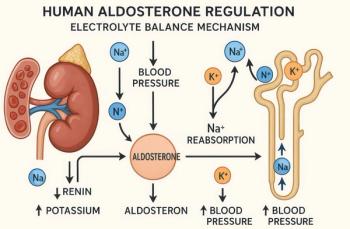
Subclinical Atrial Fibrillation Rears its Head, Again
Increased detection of subclinical atrial fibrillation intensifies a common clinical quandary in AF patients: to anticoagulate, or not?
As monitoring technology becomes more sophisticated, physicians everywhere continue to struggle with the new disease entity known as “subclinical atrial fibrillation” (SCAF). Results from the CRYSTAL-AF trial1 in 2014 opened the Pandora’s box for detection and diagnosis of subclinical AF. CRYSTAL-AF demonstrated that use of implantable loop recorders placed for indications such as cryptogenic stroke, is superior to traditional monitoring for detection of subclinical AF. With the increasing prevalence of cardiac pacemakers (which essentially serve as continuous ECG monitors), the diagnosis rate for SCAF is even higher.
A recent study published in Circulation, called CONFIRM-AF, found similar results in patients without a pacemaker or prior cryptogenic stroke, showing that implantation of a continuous loop recorder (St. Jude) increased the detection of SCAF lasting ≥ 5 minutes. In order to be eligible for loop monitoring, patients seen in cardiology or neurology outpatient clinic without prior known AF had to have a CHA2DS2-VASc score of ≥ 2, sleep apnea or body mass index > 30, plus either left atrial enlargement (≥ 4.4 cm or volume ≥ 58 mL) or increased serum NT-ProBNP (≥ 290 pg/mL). Using these somewhat liberal criteria for screening for AF, SCAF ≥ 5 minutes was detected in 34.4% of patients per year (follow-up ~16 mo). Not surprisingly, age, left atrial dimension, and blood pressure were predictors of SCAF; interestingly, prior stroke showed a trend towards increased SCAF but did not reach statistical significance.
So, what's a physician to do? Work with me through this hypothetical patient...
You see an 81-year-old gentleman with diabetes and hypertension in your clinic who has had recurrent syncopal episodes, one resulting in a broken hip. It is unclear whether these episodes may have been linked to changes in his blood pressure medications. However, because of the severity of his injuries (hip fracture), negative work-up to date, and recurrent nature of the episodes of syncope, an implantable loop recorder is placed by another physician. You see this patient after the device center calls you with the report that his routine 6-month loop recorder interrogation showed 3 hours and 42 minutes of asymptomatic atrial fibrillation. His echocardiogram shows an enlarged left atrium secondary to long-standing hypertension and diastolic dysfunction.
Now, is it appropriate to start anticoagulation in this patient with a CHA2DS2-VASc = 4, with a relatively low burden of incidentally-discovered AF, and risk for recurrent falls, a possible contraindication to anticoagulation? Is an OAC more likely to help or hurt this elderly patient? Leave us your thoughts below, in the comment section, and see what your colleagues think.
These are the types of questions that we now grapple with on a day-to-day basis. As SCAF, a relatively new disease entity, becomes increasingly common, we need to generate more high-quality randomized clinical trial data that will help guide the decision to anticoagulate--or not--so that treatment can be standardized for our patients and outcomes improved.
References:
Sanna et al. N Engl J Med 2014; 370:2478-2486
Healey et al. on behalf of the ASSERT-2 Investigators. Subclinical Atrial Fibrillation in Older Patients. Circulation. 2017;CIRCULATIONAHA.117.028845, originally published August 4, 2017.
Newsletter
Enhance your clinical practice with the Patient Care newsletter, offering the latest evidence-based guidelines, diagnostic insights, and treatment strategies for primary care physicians.


















































































































































































































































































